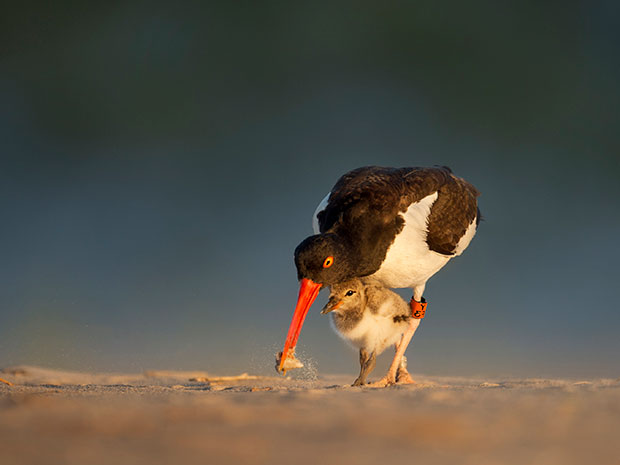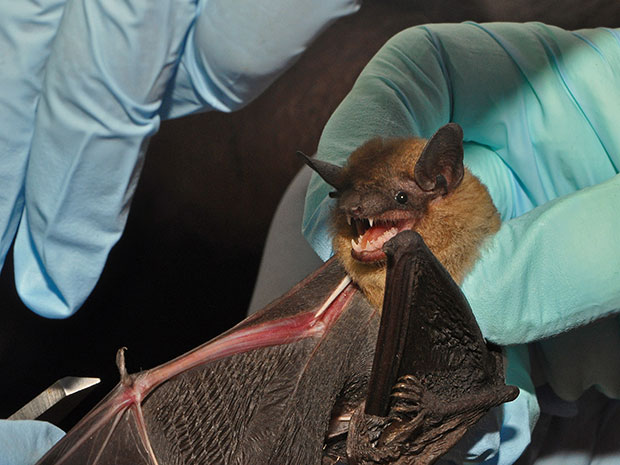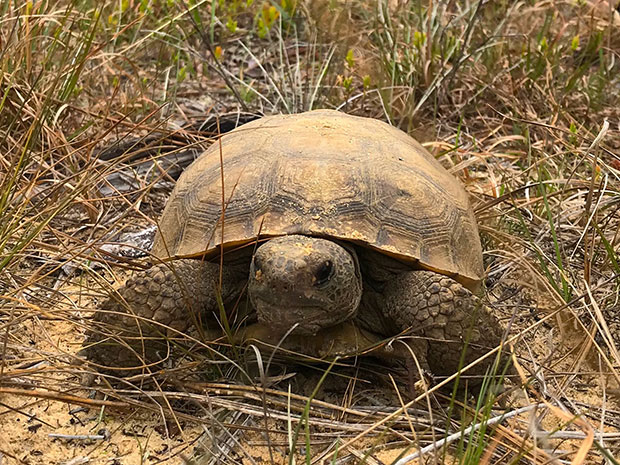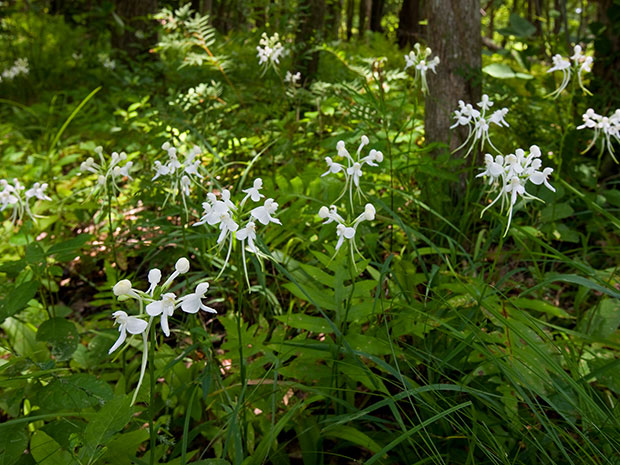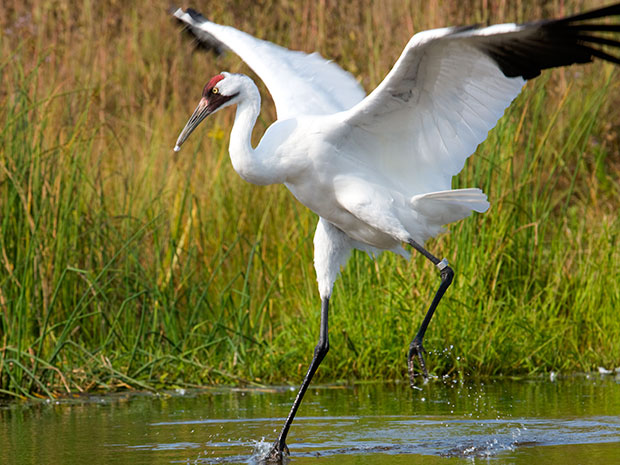Recovering Species At Risk
We employ a scientific approach to conserve and recover species and their habitats through strategic, high-value collaborations.
As we look to the future, we are optimistic that our collaborative, public-private partnerships will continue to make an impact to benefit future generations. As part of our continued commitment to environmental stewardship, we are investing in projects that will focus on strategic conservation actions for at-risk species and their habitats. Together, we can find solutions that balance smart infrastructure development and natural resource conservation.
Championing the Cause for Bats
Real solutions for species recovery
Southern Company is supporting research to find a cure for a deadly disease that threatens North America’s bat population. We are helping to fund the research and treatment of white-nose syndrome, a rapidly spreading deadly disease killing off bat populations across the U.S., through the Bats for the Future Fund.
The Challenge
Bats play a vital role in North America’s ecosystems, acting as natural pest control agents and facilitating pollination and seed dispersal. In winter, many bats hibernate in caves and abandoned mines. White-nose syndrome is a deadly disease caused by a fungus. It attacks bats during hibernation, and it could potentially push some bat species to the brink of extinction. The disease has been found in 32 states and five Canadian provinces, destroying an estimated six million bats in the past decade. This decline in bat populations poses a major threat to the ecosystems that rely on them.
Promising Treatments
On October 30, 2018, the Bats for the Future Fund awarded four additional research projects testing treatments for white-nose syndrome, accelerating efforts to find a cure and slow the rate of decline for bats. The projects will test four different environmental treatments, as well as further develop a vaccine test to help manage the disease and improve survival and recovery of affected bat populations. The hope is to reduce the mortality rate and eventually facilitate the recovery of bat species currently considered to be threatened.
Catalyzing Longleaf Keystone Species
Red-cockaded Woodpecker Management
Protecting Red Cockaded Woodpeckers in Alabama's Longleaf Pine Forests
The endangered Red-cockaded woodpecker (RCW) is a small, nonmigratory bird that is the only woodpecker to make its roost cavities in living pines. They require mature trees because older pinewood is more easily excavated. As the primary excavators of cavities in the pine trees that are used by dozens of other birds and mammals, the RCW is considered a keystone species of the longleaf ecosystem.
Crawling Home to Georgia
Orianne Indigo Snake Preserve
The gopher tortoise, another keystone species of the longleaf ecosystem, dig burrows in the sandy soil up to 15 feet deep and 40 feet long. These cavities provide shelter for 360 animal species, creating a safe harbor during forest fires.
In addition to funding habitat restoration, Southern Company subsidiaries have spearheaded conservation efforts, including relocating displaced gopher tortoises with the help of public-private partnerships. Another remarkable achievement resulting from years of longleaf pine-wiregrass habitat restoration was the reintroduction of the indigo snake to the Florida sandhills region. The species had not inhabited the area for over 30 years.
Focusing on landscape-scale restoration for these key species serves as an umbrella for hundreds of other species dependent upon the longleaf pine ecosystem for survival.
Bolstering Bird Populations
Southern Company launched its signature Power of Flight program in 2003, in partnership with the National Fish and Wildlife Foundation (NFWF). For years it was the largest public-private funding effort for bird conservation in the Southern U.S. seeking to restore and revive the populations and habitats of southern birds through habitat restoration, species management and environmental education. Focal bird species included both game and nongame species inhabiting everything from forests and grasslands to wetlands, marshes or coastal areas.
Bogue Chitto Creek Farms Helps Restore Habitat For Northern Bobwhite Quail
Shorebird conservation on Florida's Gulf Coast beaches
Power of Flight made significant contributions to conserving many bird species over the years. A few examples include: translocating more than 200 endangered red-cockaded woodpeckers to viable habitats, increasing self-sustaining populations of the species and reducing their recovery rate by 11 years; adding 54 whooping cranes to the eastern migratory population; safeguarding beach nesting plovers and terns at sites along the Florida panhandle and National Seashore of Mississippi; understanding the life history of a small population of American kestrels endemic to southeastern forests; and, reducing human disturbance affecting threatened Atlantic flyway red knots in the Altamaha, Georgia.
Protecting Critical Nesting and Stopover Sites
Beaches and coastal areas are important stopover sites for migratory shorebirds such as the red knot, which travels thousands of miles from its Arctic breeding grounds to wintering sites in South America. The Gulf and Atlantic Coasts support important breeding populations of beach nesting birds. This includes three types of plovers – piping, Wilson’s and snowy. All share an affinity with sandy beaches where birds forage, nest and seek refuge. Plovers lay their eggs in shallow depressions on beaches. Because of their camouflaged coloration, few people are aware of their presence, so nesting sites are highly vulnerable to disturbance, particularly by humans and dogs. Two additional species – the least tern and black skimmer – also rely on the beach for nesting, often occupying the same beach space as plovers. All five species are struggling to find sufficient habitat to breed.
In partnership with NFWF, we are bolstering populations of these birds by helping to identify and monitor sensitive nesting areas, providing best management practices for beach maintenance staff and teaching beachgoers how to enjoy the beach while also respecting nesting areas.
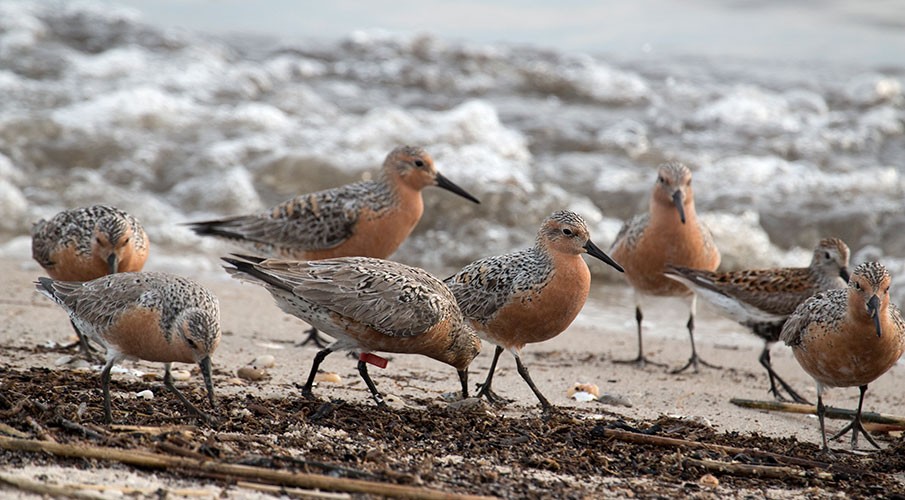 Red Knots
Red Knots
Recognizing significant conservation and leveraging opportunities for meaningful outcomes, Southern Company joined the new Gulf Coast Conservation Grants Program in 2015 to address conservation needs, particularly of coastal and migratory birds, that were not expected to be addressed under Deepwater Horizon recovery funds.
Projects funded have helped improve survival and reproductive success for numerous priority bird species, filled critical scientific gaps and developed decision-support tools. Additionally, public and private groups were brought together to create effective conservation recovery strategies that will guide coastal bird conservation projects throughout the Gulf over the next decade.
Balancing Biodiversity
Restoring White Fringeless Orchid in Georgia
Coosa River Bypass Restores Biodiversity to Certain Stretches of The River
Protecting and Maintaining Wildlife During Renewable Project Construction
Moon River Canoe Launch Built On Banks Of Alabama's Cahaba River
The "Bat-Man" - Jeff Pajor
Offshore Artificial Reef Becomes New Prime Habitat For Marine Life
Alabama Power Shoreline Management Helps Protect Endangered Species
Our subsidiaries continue taking steps to protect and enhance critical species habitat that contribute to the extraordinary biodiversity where we are privileged to work, live and play. While some conservation actions we take are strictly voluntary, some may formally be incorporated into operating licenses or considered a form of mitigation as part of the environmental permitting process. Still, our foresters, biologists and employees often take steps to go even further than required to do what they can to help preserve and protect diverse species and habitats with which we intersect because environmental stewardship is part of Our Values.
The best part is that the target species benefits from good conservation practices either way. We hope to highlight more complete examples in the future while clearly delineating between actions that are voluntary and actions that are required because there are many interesting and inspirational stories to share when we manage both risks and opportunities together. We understand that prudent use of natural resources is vital to meeting our customers’ needs, and we strive to protect those resources for future generations.
Learn more about how we practice conservation and promote biodiversity

